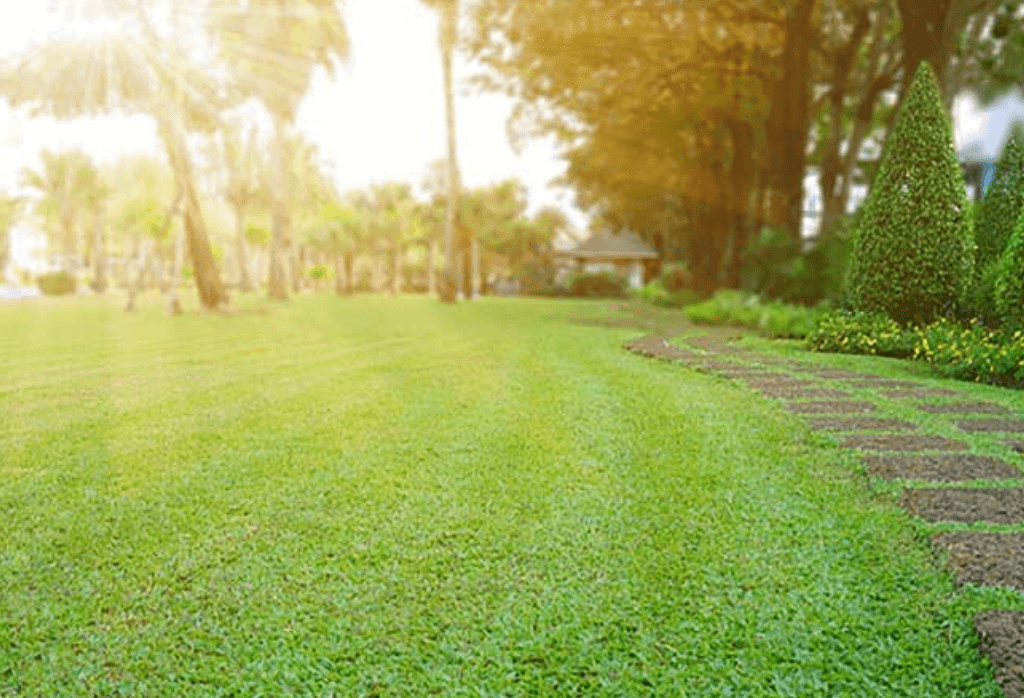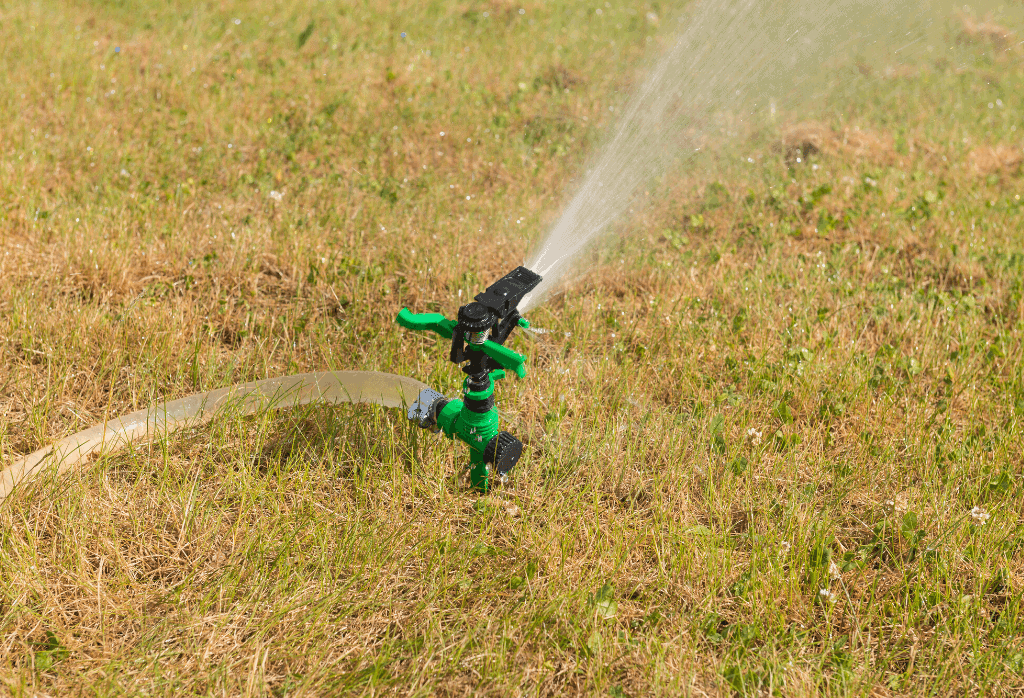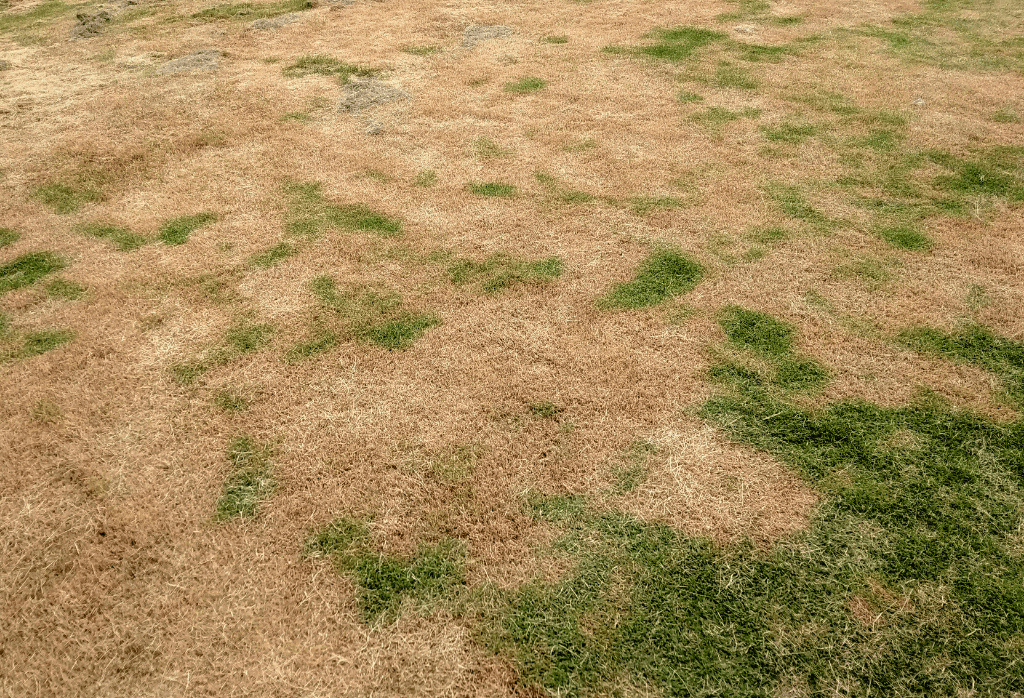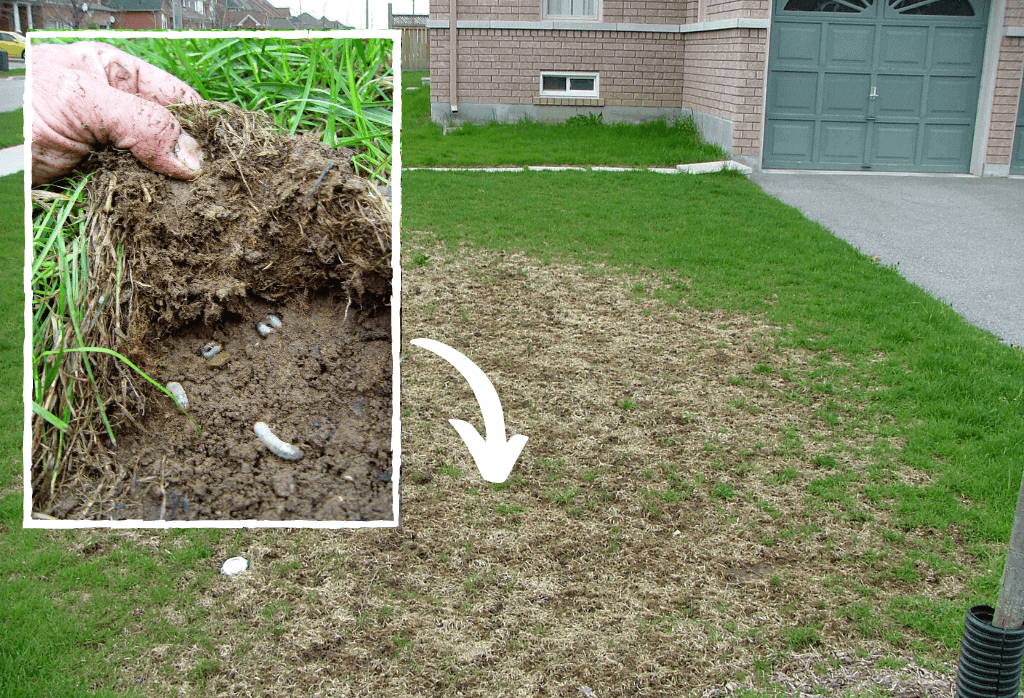Summer Lawn Problems
As summer arrives, lawns across the country begin to show signs of stress. Even the best maintained turf will become stressed as temperatures climb to 90 degrees or more, followed by the same high humidity.
As these stressors begin to impact turf growth, tell tale signs appear. Spotting them is the key to quickly correcting potential problem situations before any serious damage takes place.



The lawn is suddenly darker, a deep blue. Why? To learn the answer, consider how much water the lawn has received. In lieu of rainfall, the lawn needs 1.0 to 1.5 inches of water per week. If this is not happening, grass plants begin to show signs of drought stress; and the first sign is a change in color to a deeper, darker green. Looks great, but only for a day or two. If water is not supplied, via rainfall or irrigation, the lawn will soon turn brown and go dormant.
The lawn is brown. As above, if your lawn is not getting enough water each week during the hot, summer months, it will turn brown. This means simply, the lawn has slowed and will eventually stop growing. When photosynthesis does not take place consistently, the grass blades dry up and turn brown. Again, the solution; water.


Patches of brown in an otherwise green lawn. The cause can be one of several situations. First, the lawn may simply be dry. If water does not remedy the situation, check for surface insects or grubs. Small larvae, sod webworms, can be found in the thatch layer, just above the soil surface, if they are active. This is a very controllable problem. Summer insect control will quickly stop activity.
If the grass can be pulled back like a rug, roots have been destroyed by white grubs. Again, a grub control application will stop the activity. Dead turf may need to be reseeded.
Finally, the brown patches can be the result of summer disease. Look at individual grass blades. Most diseases [leafspot, dollar spot, brown patch] can be identified by lesions on grass blades. Typically, as conditions improve, the disease will slow and stop without chemical treatment. When a fungicide is applied, it’s important to understand that the residual control activity will only last about 3 weeks or so. If conditions have not changed [temperature, humidity], the disease will return. Most healthy lawns will grow through moderate disease activity. To avoid destructive disease damage, be sure the lawn is fertilized regularly, mowed tall, and watered per the above amounts.
Drought, bugs, and disease; these are a few of the most predictable summer lawn problems. The best strategy for a healthy lawn is to know the symptoms and take quick action to correct the above situations. Fortunately, none of the above problems is beyond control. Contact ExperiGreen Lawn Service for expert diagnosis and treatment solutions.


Join Our Free Lawn Care Newsletter
Stay Up to Date With The Latest News & Updates
* We don’t share your info with anyone ever.




